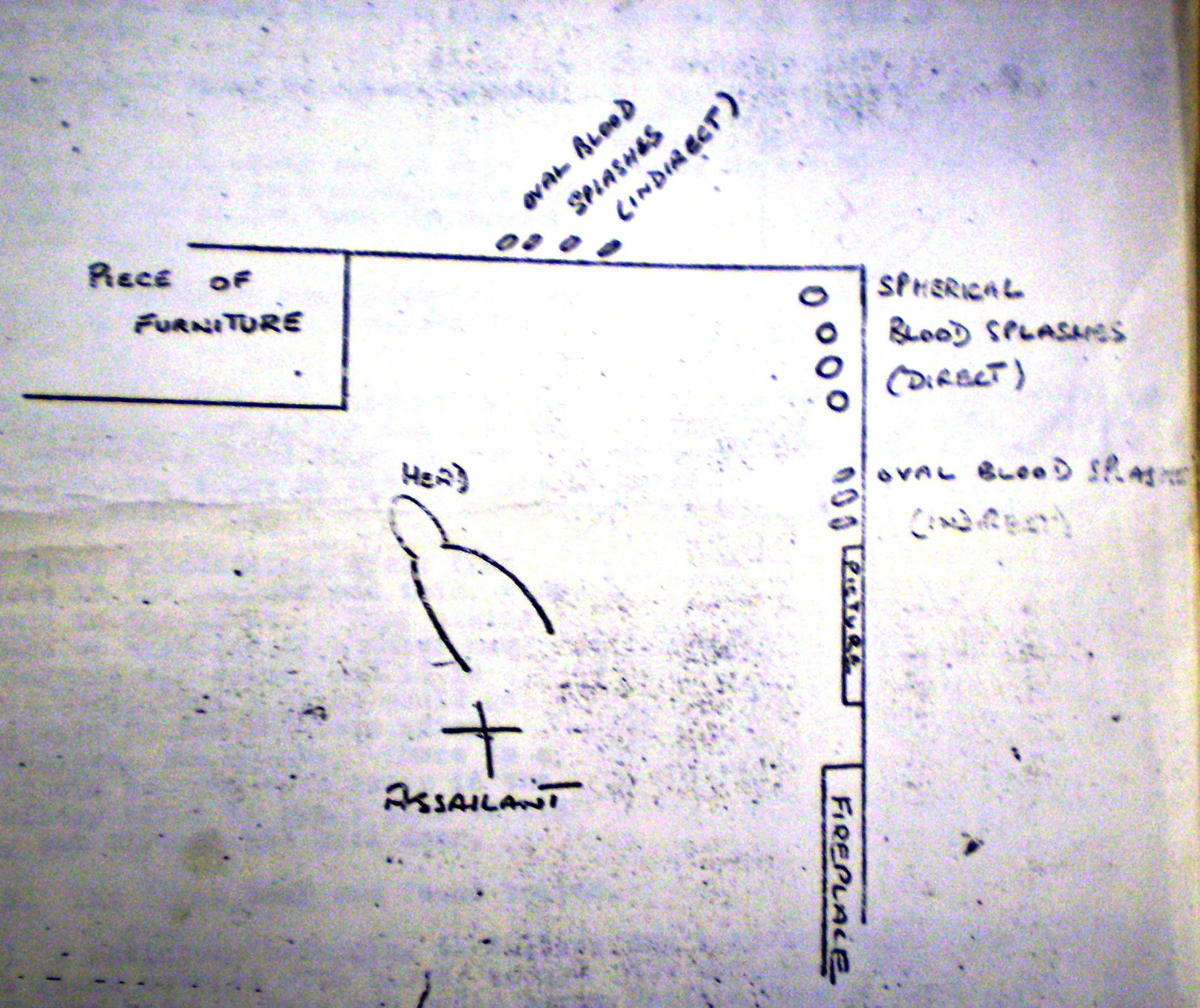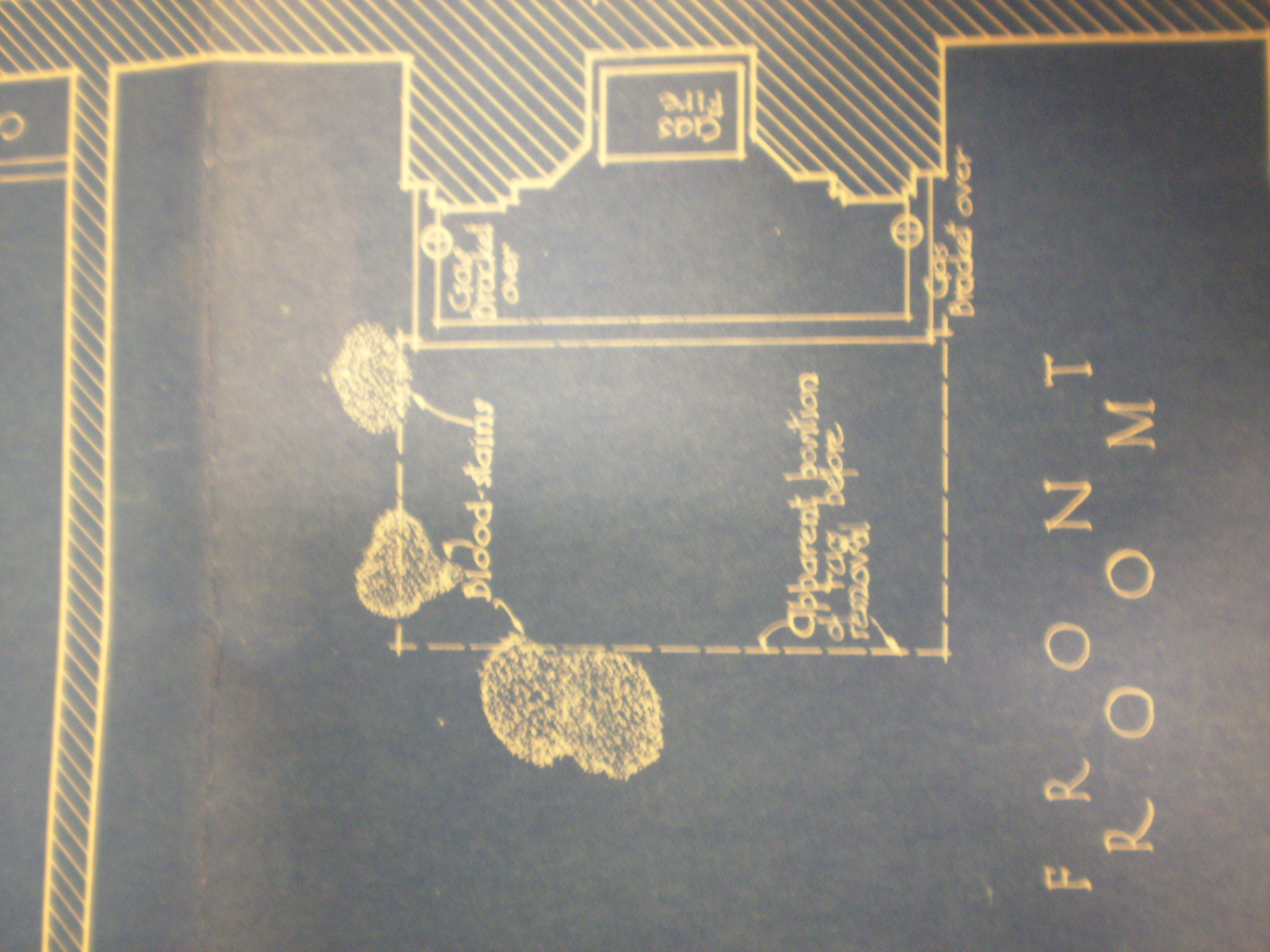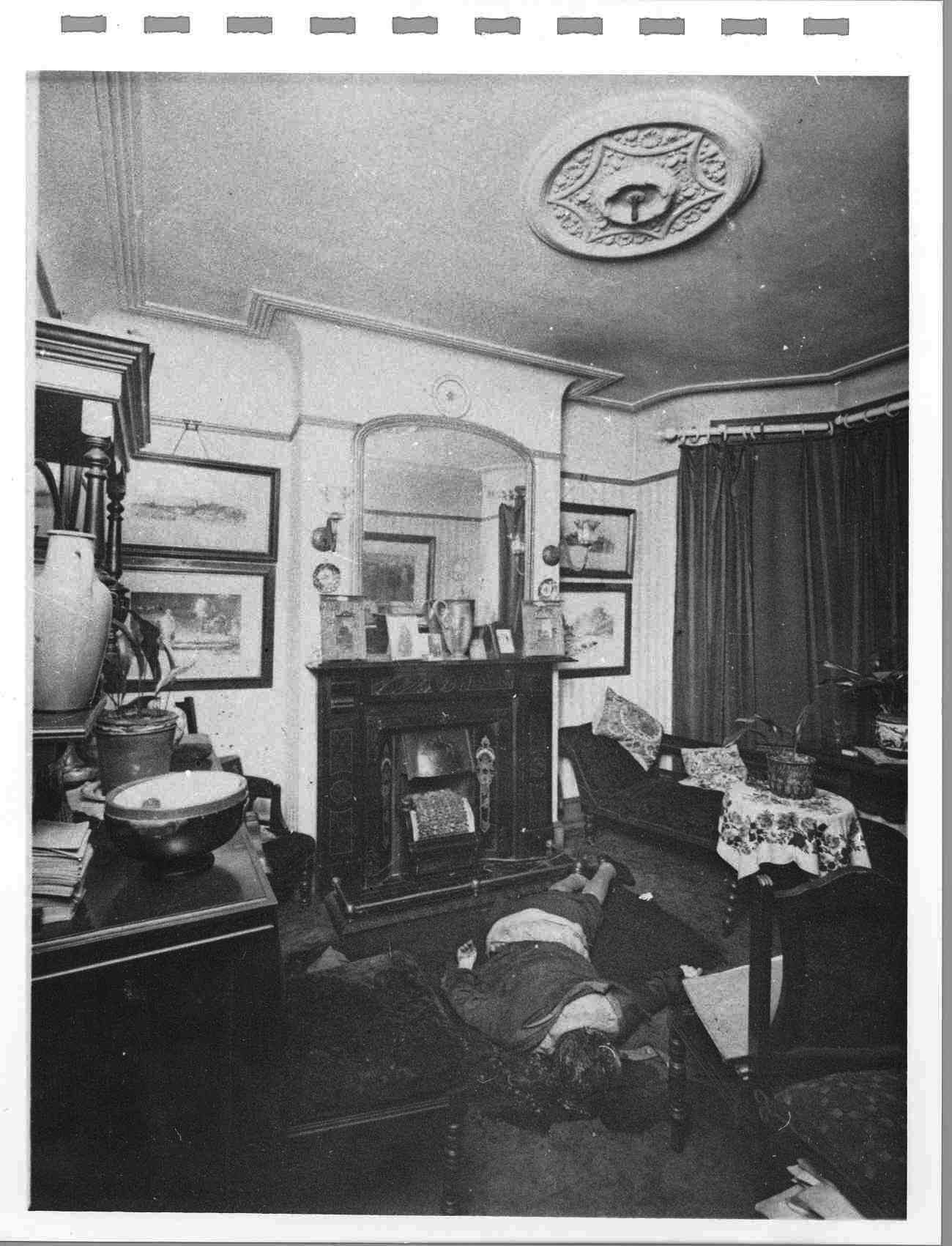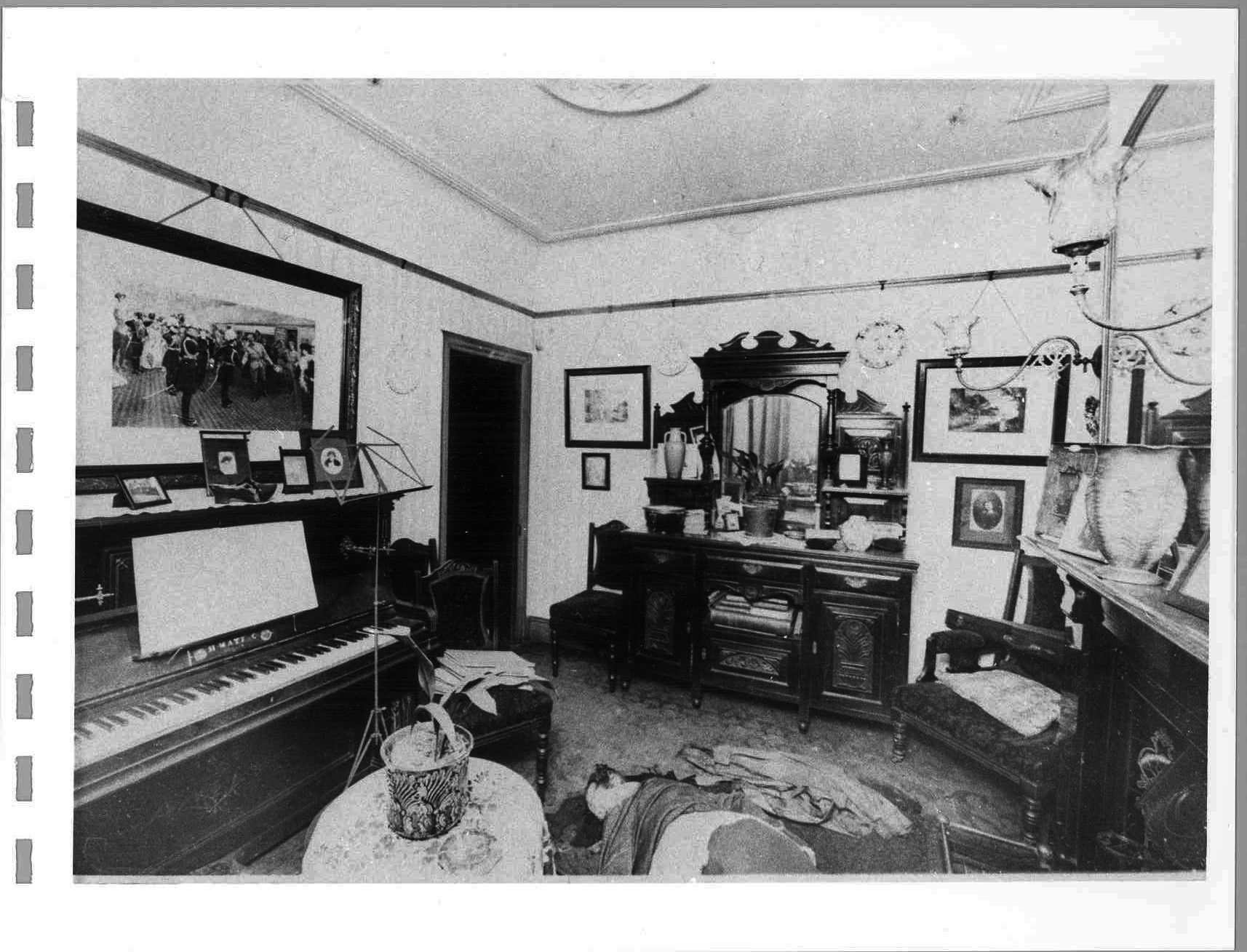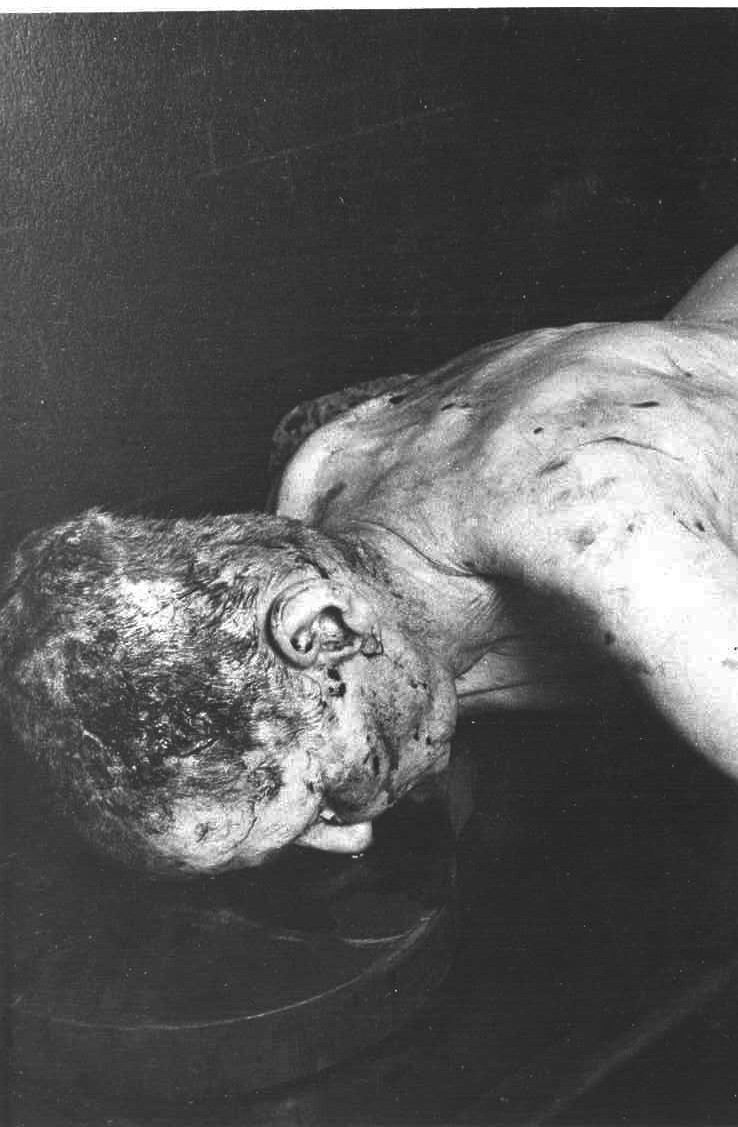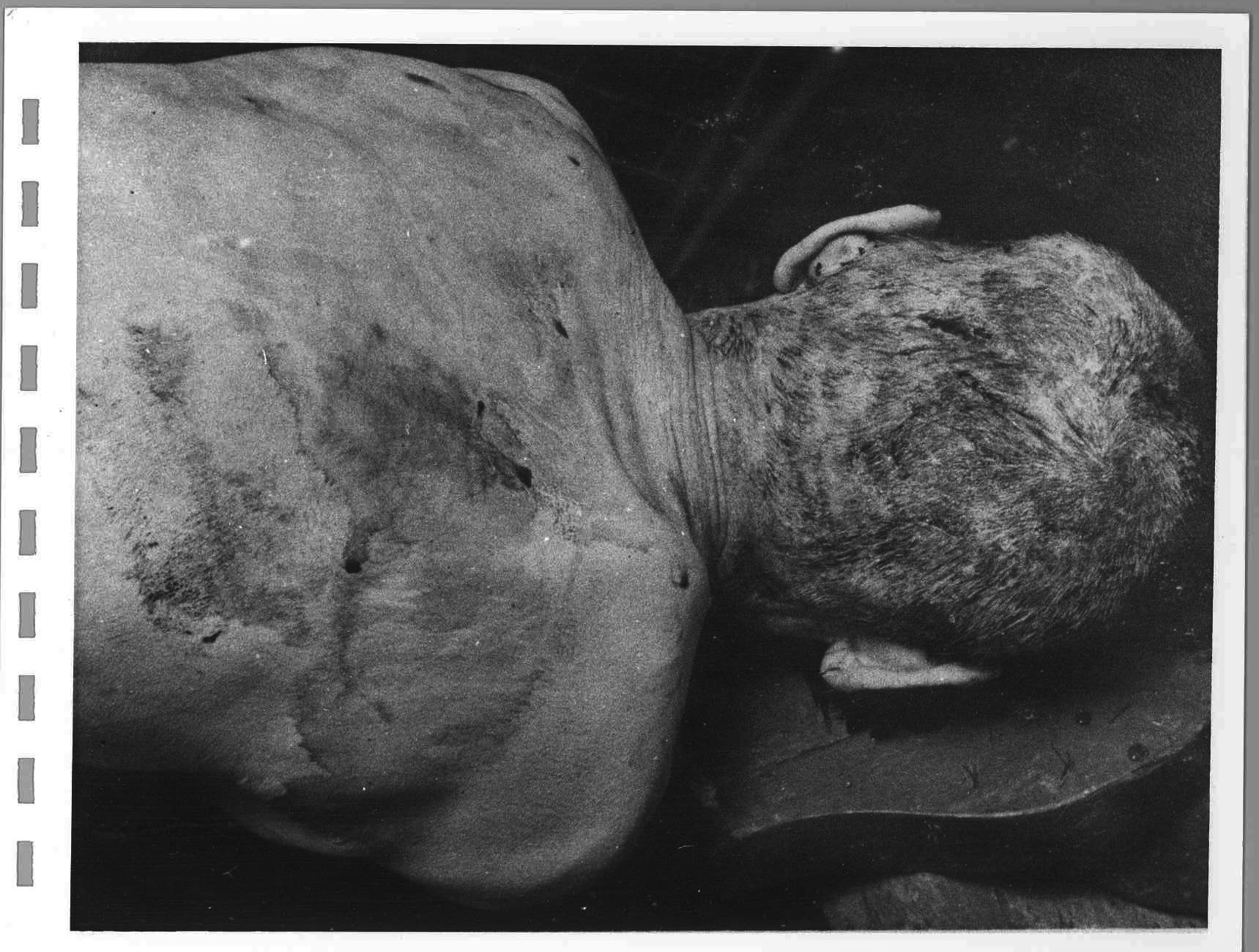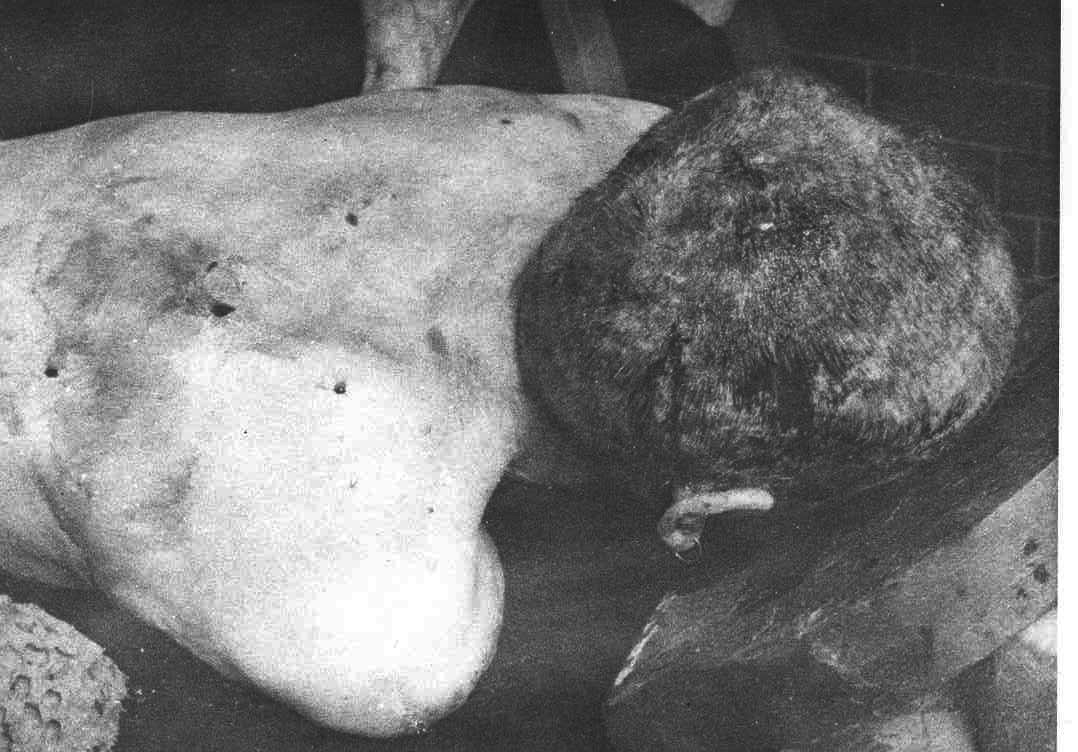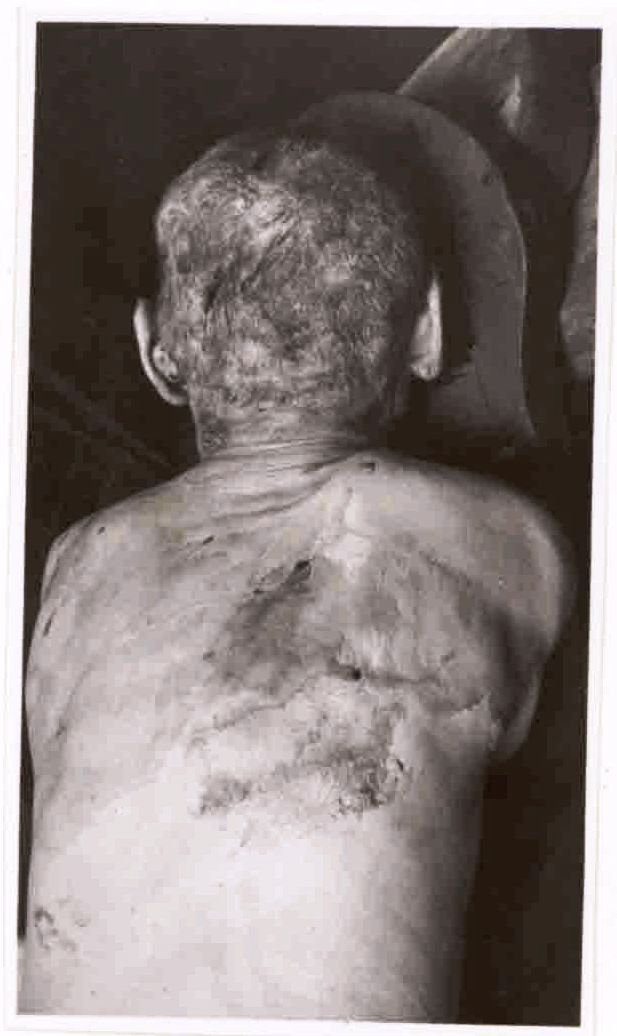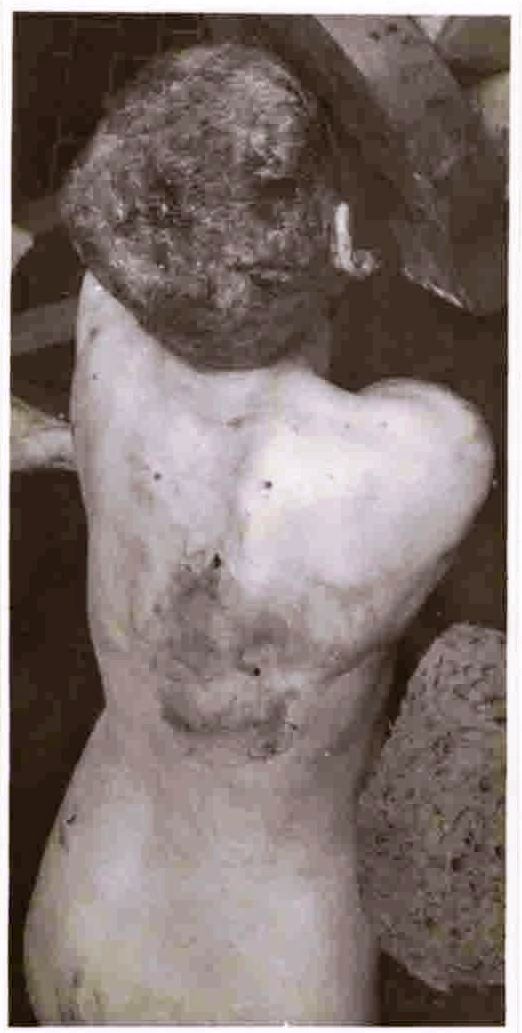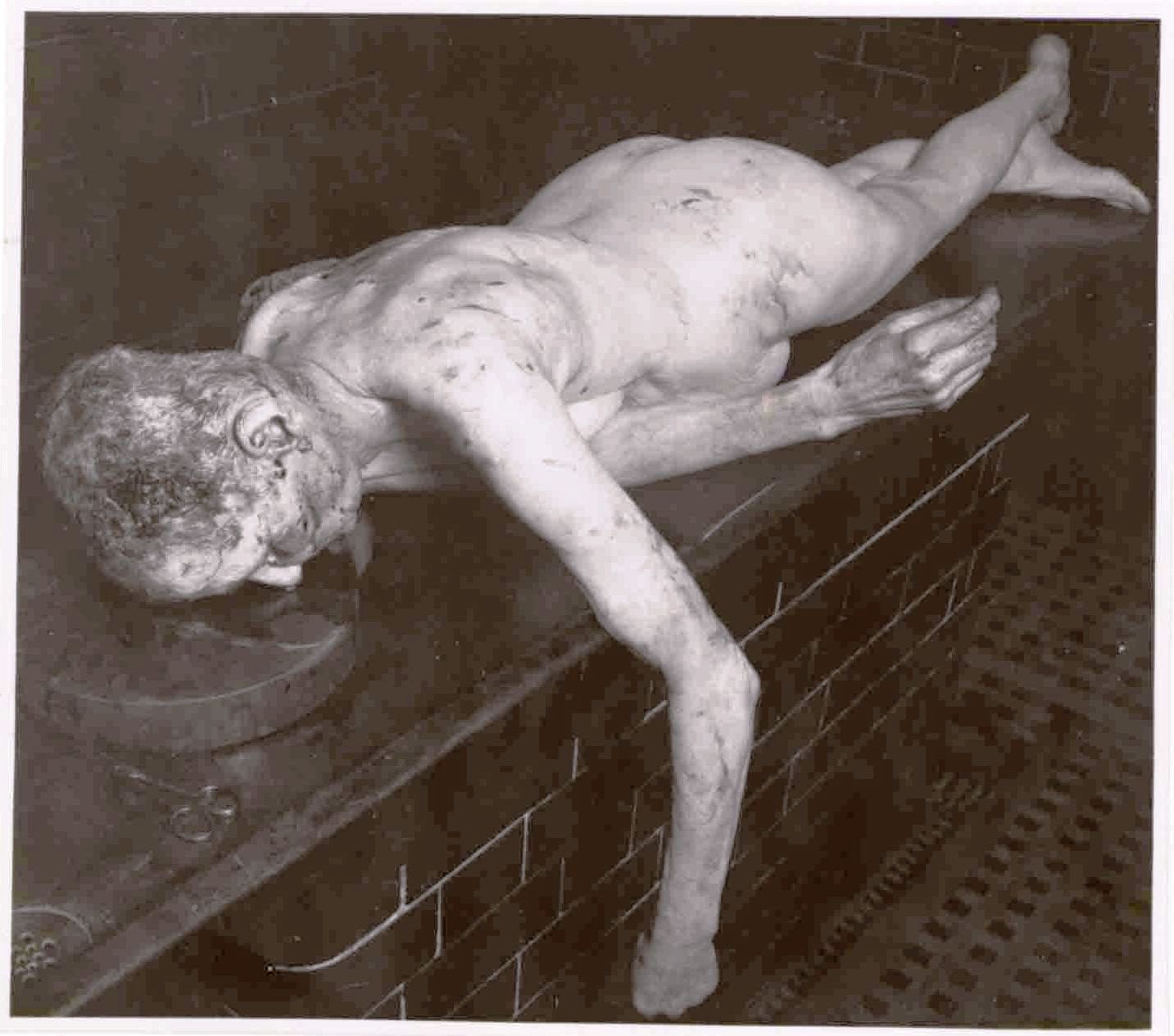A hub for important files and photographs which may have forensic significance.
Images on all pages can be clicked upon to enlarge and view in full size, particularly useful for reading.
—
Reports and Statements
Complete reports, statements, and testimony by professionals (e.g. physicians, forensic experts) regarding the physical evidence.
Professor McFall:
Provided the examination of the body on the night of the murder and post-mortem reports. Testified for the prosecution.
https://www.williamherbertwallace.com/case-files/professor-mcfall-all-reports-and-evidence/
Dr. Hugh Pearce:
Doctor of medicine, L.R.C.P. and M.R.C.S., assisted McFall and provided evidence for the prosecution.
https://www.williamherbertwallace.com/case-files/dr-hugh-pearce/
Dr. Robert Coope:
Doctor of medicine and member of the Royal College of Physicians. Performed extensive tests on the clotting of blood.
https://www.williamherbertwallace.com/case-files/dr-robert-coope-full-statements-reports/
Professor Dible:
Pathologist, provided forensic evidence and evidence as to the time of death for the defence.
William Henry Roberts:
City analyst, received and described various objects handed to him by the police.
—
Mackintosh Position Statements:
Florence Johnston (Neighbour):
“I looked, and saw the mackintosh tucked round her body, behind her, and touching the body. She looked as if she was lying on it.”
“I saw a mackintosh but it was not in the position shown in the photograph W.H.W.7 When I saw it it was almost hidden under her body on the side nearest the sideboard.”
Fred Williams (Police):
“Close to her head was a macintosh, blue grey colour, which was all rumpled and covered with blood.”
Professor McFall (Forensics):
“There was an old mackintosh bundled up a little beneath the right shoulder of the deceased.”
1813. MR HEMMERDE: Did you see anything of an old mackintosh? I did. There was an old mackintosh bundled up a little beneath the right shoulder of the body. This was taken out and examined and was seen to be partly burnt on the lower right front.
1840. Looking at that, the suggestion has been made that the deceased might have thrown it over her shoulders to go to the door and then to have been, I suppose, struck when she had it on? When I saw it, there was no suggestion from the appearance that that was the case.
1841. MR JUSTICE WRIGHT: You mean from the position? Yes, it was tucked under the right shoulder almost in this direction, tucked like that. (Illustrating) There was no suggestion of it having been on the arms whatever, nothing whatever.
Harry Bailey (Police):
“I saw the mackintosh produced tucked up against the body.”
“Tucked up against the body at the back I saw the mackintosh.”
Herbert Gold (Police):
“A mackintosh was lying by the side of the body.”
“There was a blood stained mackintosh tucked in by the body near the shoulder.”
Hubert Moore (Police):
“Close up against the deceased’s body was a mackintosh in a crumpled and bloodstained condition.”
“There was a gent’s macintosh (sic) in a crumpled condition tucked up against the deceased’s head and shoulders.”
“The mackintosh was in a crumpled condition about half its length, tucked up against and slightly underneath the right shoulder and head.”
—
Reports of Burning on the Mackintosh and Julia’s Skirt
Professor McFall:
“[The mackintosh] was partly burned on the lower and front part.”
“[The mackintosh] was taken up and found to be partly burnt on the lower right front.”
Harry Bailey (Police):
“I saw that [the mackintosh] was burned on the left side.”
“At the mortuary I saw the front of the skirt on the body was partly burnt, as produced, but there were no signs of burning on the underskirt.”
“I then observed that the mackintosh was burnt down the right side.”
2628. You saw [Julia’s] skirt was burnt? I noticed as I turned over the body the skirt was burnt in the front.
2629. Whereabouts was it burnt as she was wearing it? Directly opposite her private parts.
2630. Right in the front? Yes, as worn, where you fasten it up.
2631. MR JUSTICE WRIGHT: What is the proper name of it? The flap was here in the front and I should say that the flap should be at the side from what I know of female wear.”
…
2721. It is quite clear, is it not, that as she was wearing the skirt it was the front of it that was burnt? As I found the skirt.
2722. As you found it on her body? Yes, I do not say how it should be worn, but that is how I found it.”
Hubert Moore (Police):
“The mackintosh was very much burned on the left side extending around to the centre of the skirt at the back.”
“A portion of the bottom of the macintosh (sic) on the left side was burned.”
William Henry Roberts (Police Analyst):
“A considerable portion of the bottom right side of the Macintosh had been recently burnt away… I had visited the house on January 21st, and then formed the conclusion that the Macintosh had been burnt in the Parlour on the night of the murder.”
“At the bottom of [Julia’s skirt’s] Placquet there were 3 recent horizontal burns, which could have been caused by contact with the hot fireclay of a Gas Fire such as was in the Parlour at 29 Wolverton Street.”
2258. Now take that skirt. ([Julia’s] Skirt handed to the witness). You see the front of it is very heavily stained? Yes.
2259. MR JUSTICE WRIGHT: Where is the burning? Just there, my Lord.
2260. Just at the back? Yes. I do not know whether that is the back or the side, I rather think it is the side.
2261. MR HEMMERDE: Was the burning at the front? I should say it is the side. I do not know how it is worn.
2262. Is it heavy burning? Yes, the skirt is burned right through and I do not think that skirt has been worn in this condition; I mean this is very friable, it is so easily broken and if it had been done some days before it would have been broken right through. I think it was done the night of the murder.
—
Mackintosh Blood Patterning Statements
Professor McFall:
1813. MR HEMMERDE: I still have to return to something with regard to that, but I think it is better to take it now in order. Having noticed the condition of the body, did you see anything of an old mackintosh? I did. There was an old mackintosh bundled up a little beneath the right shoulder of the body. This was taken out and examined and was seen to be partly burnt on the lower right front.
1814. Just hold it up now and let us see where it is burned, and also the bloodstains? And the blood stains?
1815. Yes; this side here, on the right side, and bloodstains here (?) particularly is very characteristic.
1816. MR JUSTICE WRIGHT: Where on the right side? The burning is upon the right side. The bloodstains are all over it.
1817. There were bloodstains also on the right side? Yes, my Lord.
1818. MR HEMMERDE: You said that one of the blood marks was very characteristic? Yes, that is on the left sleeve.
1819. It is inside out now, is it not? Yes. There are several of them by appearances, but his one is very definite.
1820. You have got to the left now? It is the left I am looking for. By the handling a good deal for the blood has been detached – no, it is not; it is quite definitely here. That is the one I refer to, quite definitely here upon the left sleeve, showing a projection mark of blood.
1821. Would you put that into simple language?
1822. MR JUSTICE WRIGHT: What is a “projection mark”? The blood is thrown on to something; it may be small particles of blood projected on to some surface; the usual thing is from a spurting artery. The same thing comes from ink, or anything.
1823. MR HEMMERDE: Some of the blood on that garment might come from the floor, I suppose? Yes; most of it, I think, does.
1824. But you find those traces and you find others of direct projection? This is direct projection. There it is, to speak for itself.
1825. How many are there of those? Only two definite; the other are indefinite.1826. Have you looked at both sleeves? Yes. I cannot find anything on the other one quite so characteristic. There is definite blood here, but not the characteristic mark of projected blood. There are a good many that are doubtful, nothing that I can speak of definitely.
1827. Just look at the right hand cuff there, outside and in. Do you find anything at all there suggestive? Yes, there is blood upon it, very little blood, in the one part here, and a little here again, but very little. (Indicating).1828. Just inside? Yes.
1829. And around the outside? Yes, there is some on the outside, but not so much as on the left, I think.
1830. MR JUSTICE WRIGHT: The projected blood on the left sleeve was on the outside? Yes, my Lord, and in this direction too. That is rather important, I think. (The witness indicated).
MR ROLAND OLIVER: If it is not inconvenient, might that mark be shown?
THE WITNESS: It is there. (Handing mackintosh to learned Counsel). There are two marks. May I explain how the direction is arrived at?
MR HEMMERDE: Yes.1831. MR JUSTICE WRIGHT: Which mark are you talking about now? I will point it out, my Lord, in a minute. It is a mark upon the left sleeve.
1832. Is that the one which you said showed projections? Yes, my Lord.
1833. On the left sleeve where? Just here. (Pointing).
1834. Between the elbow and the shoulder? Yes, my Lord. The greater portion of this is below, and it looks like a streak. A little bit is at the top. It is roughly of the soda-bottle type that can be seen. There is another one by it of the same type.
1835. What does that projection show? Either that there has been a spurting of blood or a splashing of blood in front, presumably by somebody who had it on.
1836. I do not understand; I am sorry. It shows projection? Yes, of blood.
1837. Which the blood took? Yes; that is all one can say.
1838. You mean from a spurt of blood in front of the mackintosh? Yes, on to the mackintosh. I cannot say more than that.
Professor Dible:
3737. Illustrated by the walls of the room the sort of splashes blood makes when it is quite a fresh squirt, the round obvious marks. Would fresh blood squirting impinge upon such a thing as a mackintosh and make a similar mark? Yes, it would.
3738. Have you looked at this mackintosh? Yes.
3739. Did you find such a mark? I was shown one.
3740. Do you think it is one? It might be interpreted as one.
MR JUSTICE WRIGHT: As what?
THE WITNESS: A squirt or fallen clot on that garment.
3741. MR ROLAND OLIVER: Beyond the two, which I will deal with in a moment, did you see any on the mackintosh? No, I did not see any on the mackintosh.
3742. I think Professor MacFall might be trusted to have shown us any if there were any there. Are those marks of blood on that mackintosh that you saw yesterday consistent with being drips? Yes.
3743. Dropping from an open wound on to that coat? Yes.
MR JUSTICE WRIGHT: It was said some might be due to lying on the hearthrug; I do not know.
THE WITNESS: It is only those two particular ones, my Lord, that Professor MacFall said were typical.
MR JUSTICE WRIGHT: You also said they might be consistent with drips.
3744. MR ROLAND OLIVER: Merely a drip. Which do you favour of those two? Do they look to you more like squirts or drips? I cannot say.
3745. MR JUSTICE WRIGHT: They might be either? Yes, my Lord.
William Henry Roberts:
“The Macintosh was heavily and extensively stained with Human Blood on the right side, both inside and outside, and on the upper inner side of the right sleeve. The outside of the left cuff and a large area near the left pocket were similarly stained.”
2203. Let me take, first of all, the mackintosh. What do you say about that? The mackintosh was extensively and heavily bloodstained with human blood on the right side.
2204. Outside or inside, or both? Both outside and inside.
2205. What about the sleeves? On the upper inner side of the right sleeve.
2206. Just point out where that is? (The witness did so). You will see blood all down here (indicating).
2207. MR JUSTICE WRIGHT: Still the right side? Yes, my Lord.
2208. MR HEMMERDE: Would that be the place where a person taking the coat off might touch? With a hand coming out?
2209. That is what I mean? Yes, they might perhaps.
2210. That is right up by the armpit on the right hand side? Yes. Most of it is on the upper side.
2211. But there is also some inside? Yes. I mean the upper side of the sleeve.
2212. What did you find about the burning there? The left side was also very heavily stained with blood.
2213. Yes, I ought to have taken that. Was the blood outside or inside? Outside, to the left.
2214. Just point out the staining there. (The witness pointed out the staining to the Jury). Can you say what blood upon that comes direct and what is picked up from the floor? Most of this on the left side has come from contact with blood on the floor. There is some on the right side which might have come from spurting.
2215. What about the sleeves? The blood down here might have come from spurting. If there was a big spill of blood there would be no sign of actual spill; it would go into one big stain. One point you would not have any sign which way it had come.
—
Photographic Evidence
Crime Scene Photos:
https://www.williamherbertwallace.com/gallery/crime-scene-photos/
Post-Mortem Photos:
https://www.williamherbertwallace.com/case-files/morgue-photos-of-julia-wallace-graphic/
Official Police & Solicitor File Photographs:
https://www.williamherbertwallace.com/gallery/official-police-and-munro-file-photos/
Noteable Images

Sketch by solicitor Hector Munro showing the position of Julia and the mackintosh before they were moved, as according to testimony from the Johnstons.
Police File Murder Room Photographs:
Blood staining not as clear as in other images, such as those published in Murder Casebook No.25 and the Crime Scene Photos page.
Police File Post-Mortem Photographs:

